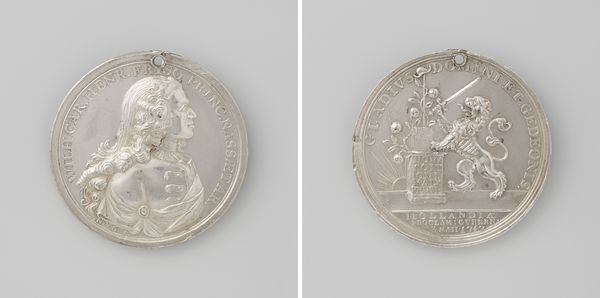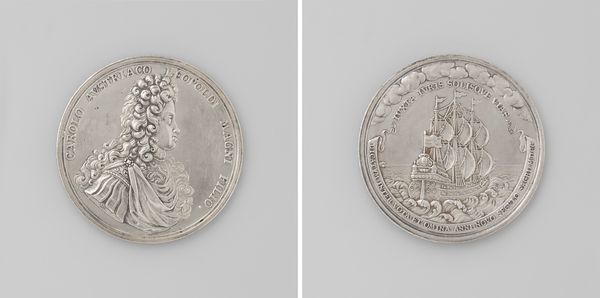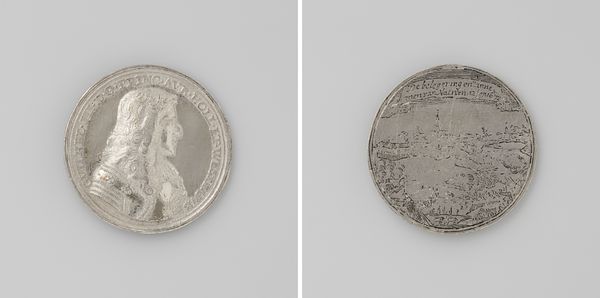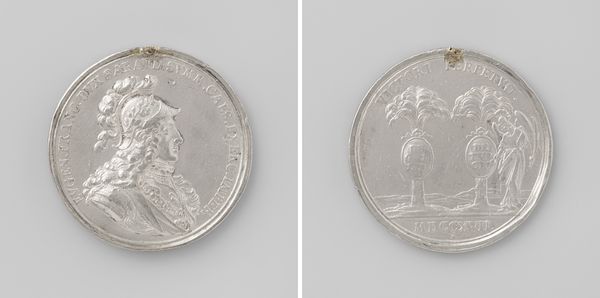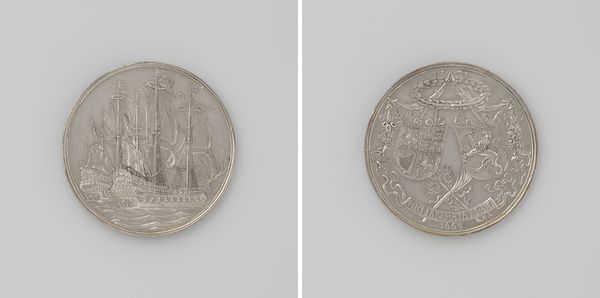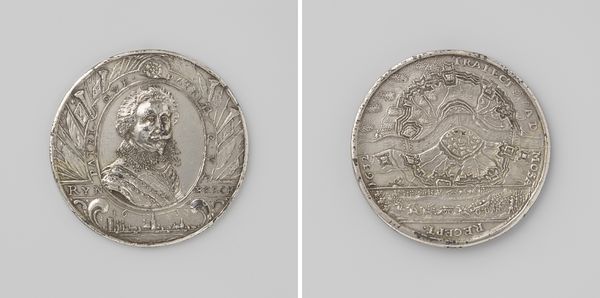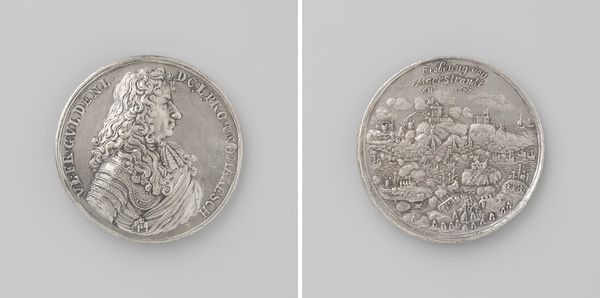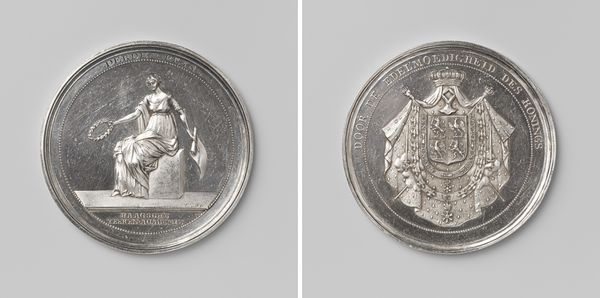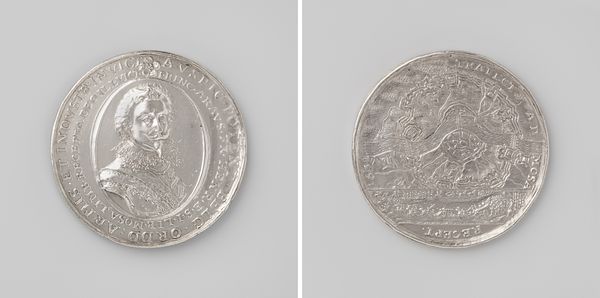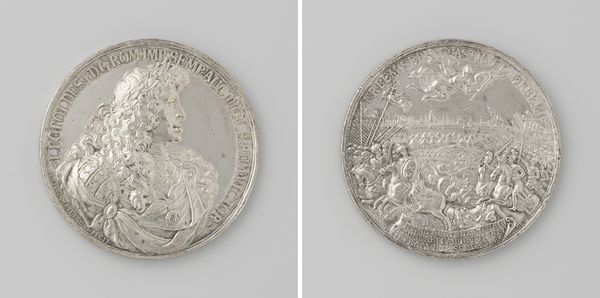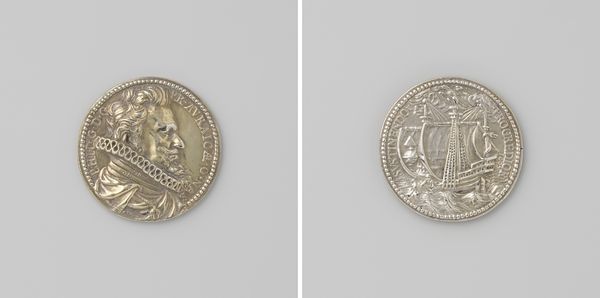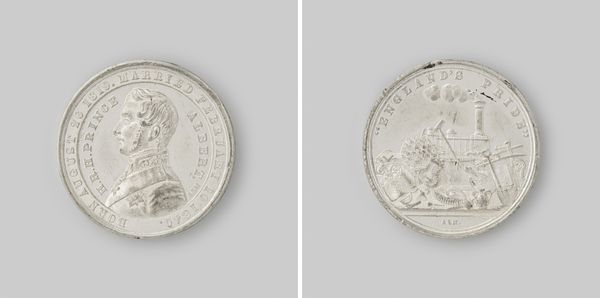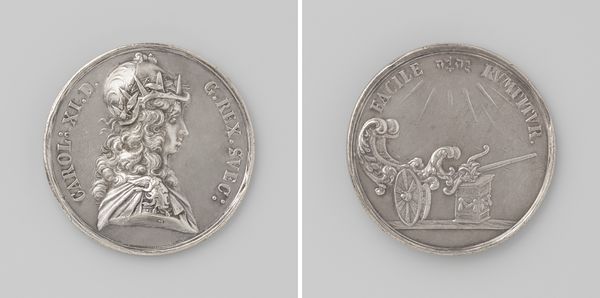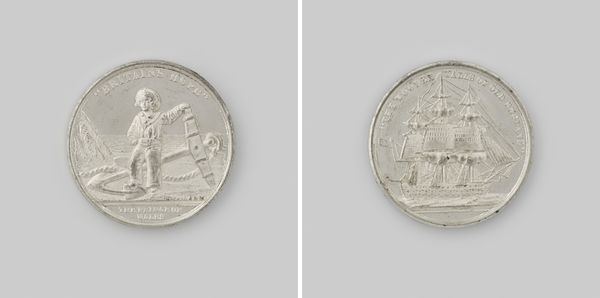
metal, relief, sculpture
#
portrait
#
baroque
#
metal
#
relief
#
sculpture
Dimensions: diameter 2.2 cm, weight 3.46 gr
Copyright: Rijks Museum: Open Domain
Curator: Take a look at this exquisite piece: a baroque metal relief created in 1697 by an anonymous artist. It commemorates the Peace of Rijswijk, honoring Leopold I. The piece resides here at the Rijksmuseum. Editor: Immediately, it feels very official. A declaration struck in silver, almost coolly distant. The detail, though, for such a small piece, is impressive. What strikes me, literally, are the two sides presented; one seems glorifying a portrait, and the other depicts a building. Curator: Precisely. One side depicts Leopold I, adorned with a laurel wreath, a classic symbol of victory and honor dating back to ancient times. It conveys imperial power, almost god-like. Editor: He looks... serious. Important. But almost too perfectly composed, perhaps a little devoid of human warmth. Then, turning to the other side, we see an image, rather architecturally rigid in some regards... what does it mean? Curator: The other side shows the Huis ter Nieuwburg in Rijswijk, where the treaty was signed. Buildings often carry potent symbolism representing stability, order, and the very foundations of society. By depicting the site of the treaty, the artist memorializes the historical event itself. Editor: Right, so the peace accord becomes solidified in metal, forever immortalized! The relief acts almost like a collective memory aid. The small scale adds an intimacy—it was meant to be held, perhaps? Passed around as a symbol of peace among allies? Curator: Possibly. Metal endows the memory with durability, resisting time's erosion. Beyond its function, its creation adheres to recognizable baroque conventions, particularly within its elaborate design. Editor: There is, of course, that sense of grandeur that just doesn't manage to translate across the years, almost reduced down to being about an event. I see some symbolism. Yet I suppose such art's significance is what we choose to extract and imbue it with as the ages march onward. Curator: Ultimately, it shows us how events are processed, understood, and then preserved through art. Editor: Very true. It is fascinating how objects morph through their histories as both aesthetic item and signifier of memory. Thanks for the discussion!
Comments
No comments
Be the first to comment and join the conversation on the ultimate creative platform.
